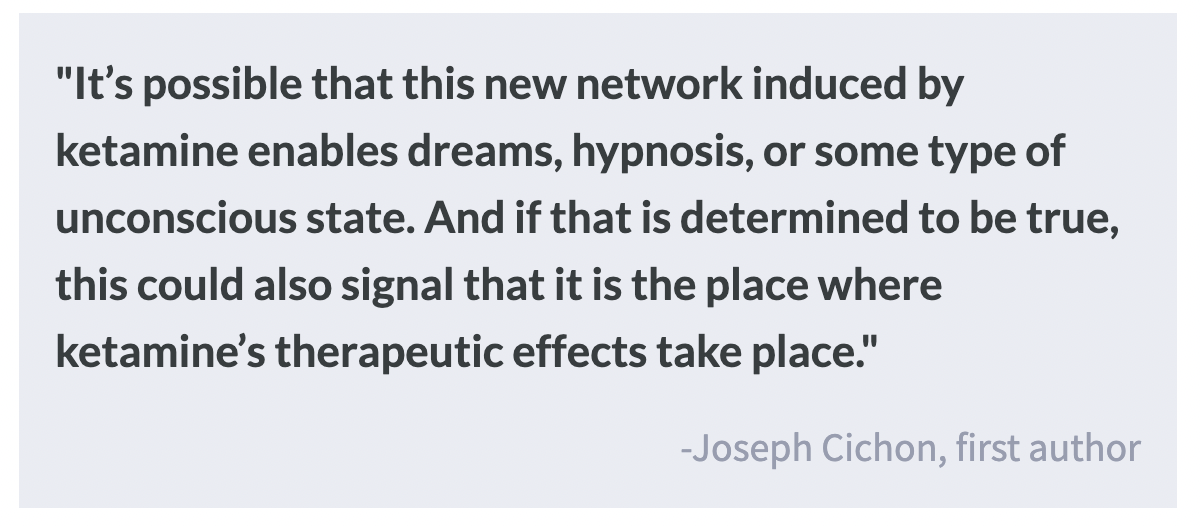Understanding Ketamine-Induced Dissociation
Post by Leanna Kalinowski
The takeaway
Ketamine-induced dissociation is driven by a “switch” in neuronal activity in the neocortex, where previously inactive neurons become active and previously active neurons become inactive.
What's the science?
Dissociation is an altered state of consciousness that is marked by feelings of disconnect from one’s thoughts, memories, feelings, or internal sense of self while experiencing vivid, internally generated experiences. It can naturally occur during periods of extreme stress or trauma, or it can emerge following treatment with psychedelics or ketamine. There is increasing interest in uncovering the neural mechanisms that underlie dissociation following ketamine treatment, which has been coined a “dissociative anesthetic”. However, the neural underpinnings of ketamine-induced dissociation are currently unknown. This week in Nature Neuroscience, Cichon and colleagues uncovered the neural activity that underlies ketamine-induced dissociative-like behaviors in mice.
How did they do it?
The researchers used in vivo two-photon microscopy, which is an imaging technique that allows for neural activity to be visualized in live mice. First, mice were bred to express GCaMP6f in their excitatory neurons, which is a fluorescent marker of calcium activity that causes neurons to light up when they are active. Next, the mice underwent surgical implantation of a transparent window into their skull, which allows for unobstructed visualization of the brain region of interest. Then, the brain was imaged by mounting the mice into a head stabilizer and recording images through the transparent window using a two-photon microscope.
They were interested in imaging the primary somatosensory cortex (S1), which is responsible for processing somatosensory (e.g., touch, pain) perception and is highly implicated in dissociation. Neuronal activity in the S1 was first measured at baseline. Following a single injection of ketamine, neuronal activity in the S1 was measured again, and differences in each neuron’s activity level were calculated. Mice also underwent a battery of behavioral tests to measure dissociative-like behaviors: (1) the tail suspension test, where dissociation was marked by a reduction of escape behaviors and the presence of a vertical head twitching motion, (2) the marble burying test, where dissociation was marked by fewer marbles buried, (3) the adhesive removal test, where dissociation was marked by an increased time to remove a piece of adhesive from their snout, and (4) the failed forelimb withdrawal test, where dissociation was marked by a failure to withdraw their paw in response to an air puff.
What did they find?
The researchers found that the neurons that were highly active at baseline became less active following ketamine administration, while a subset of neurons that had low activity at baseline became more active following ketamine administration. These neuronal changes were accompanied by dissociative-like behaviors in mice. This effect was mirrored in additional brain regions that were later measured -- including the primary motor cortex (M1), secondary motor cortex (M2), and retrosplenial cortex -- suggesting that this ketamine-induced switch of neuronal activity is uniform across excitatory neurons in the neocortex.
What's the impact?
This study found that ketamine-induced dissociation is driven by a switch in activity between active and inactive neurons. Results from this study may help us better understand the neurological underpinnings of dissociation not only following ketamine exposure but also in psychiatric disorders where dissociation is a symptom (e.g., schizophrenia).


